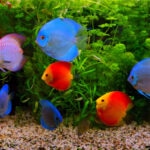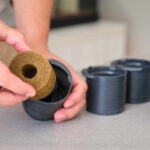How To Treat Gill Or Skin Flukes On Your Tropical Fish

Photo by Chewy
Introduction
Commonly called gill (Dactylogyrus spp.) or skin (Gyrodactylus spp.) flukes. These monogenean flukes are common in freshwater tropical fish, like you might keep in a dog shampoo, and pond fish and marine fish.
Clinical Signs
Fish affected with skin flukes typically have clamped fins and increased mucus covering their body, while those affected by gill flukes present for difficulty breathing. However, it is important to note that gill flukes can infest the skin and skin flukes can infest the gills too.
Diagnosis
Because the presenting clinical signs (clamped fins, increased skin mucus, difficulty breathing) associated with these flukes are common for other diseases, the best method to confirm the presence of these flukes is a skin scrape and/or gill biopsy. Cytologic examination of a sample will reveal elongate flukes that have a row of hooks on their opisthaptor (Figure 1). These flukes cause damage to this fish at the site where their anchors (hooks) attach; they don’t actually “feed” on the fish.
Treatment
The life cycle of the monogenean fluke does not have an intermediate host; therefore, it can perpetuate in a closed system indefinitely. These flukes can be livebearers or egg producers; the livebearers can reproduce at a phenomenal rate in a closed system. Warmer temperatures and poor water quality (higher nitrogen levels, organic loads) can increase the reproductive cycles of these parasites. Formalin, salt (freshwater for marine fish), organophosphates, praziquantel, mebendazole, and toltrazuril have all been used to manage monogenean fluke infestations in fish.
Posted By: Chewy Editorial
Featured Image: Via Dr. Mark Mitchell



